#Cooley Peninsula
Text
Sliabh Foy Loop Trail | The Home of Ireland's Last Leprechauns
Rising majestically above the town of Carlingford, Sliabh Foy (or Slieve Foye) is the highest peak on the Cooley Peninsula and within Co Louth.
The Sliabh Foy Loop Trail begins in Carlingford, then winds its way toward the protected reserve. In 2010, Carlingford earned official European Union recognition for its leprechauns. The Sliabh Foy Loop Trail became a sanctuary for the country’s…

View On WordPress
#Carlingford#Cooley Peninsula#County Louth#History of Ireland#Ireland#Irish History#Sliabh Foy Loop Trail#Slieve Foye
10 notes
·
View notes
Text
All he had to do was not commit genocide. That's all he had to do...
6 notes
·
View notes
Photo

National Library of Ireland on The Commons
A castle fit for a President?
On the day when the President of the United States of America is due to visit the historic town of Carlingford we have, serendipitously, a fine Imperial plate image of King John's Castle in that town! The Cooley peninsula and Carlingford Lough are some of the hidden gems of the island with views of the Mourne mountains and south Ulster across the water and ready access to the hinterland on both sides.
Photographer: Robert French
Collection: Lawrence Photograph Collection
Date: Circa 1865 - 1914
NLI Ref: L_IMP_2450
You can also view this image, and many thousands of others, on the NLI’s catalogue at catalogue.nli.ie
2 notes
·
View notes
Text
What Survives
What survives of Ballug Castle, on the Cooley Peninsula, County Louth. This is thought to be a 15th or early 16th century tower house to which a gable-ended dwelling was added, probably in the late 17th century. Originally the tower would have had a barrel-vaulted ceiling but this has since collapsed, along with a spiral staircase occupying a turret in the south-east corner.
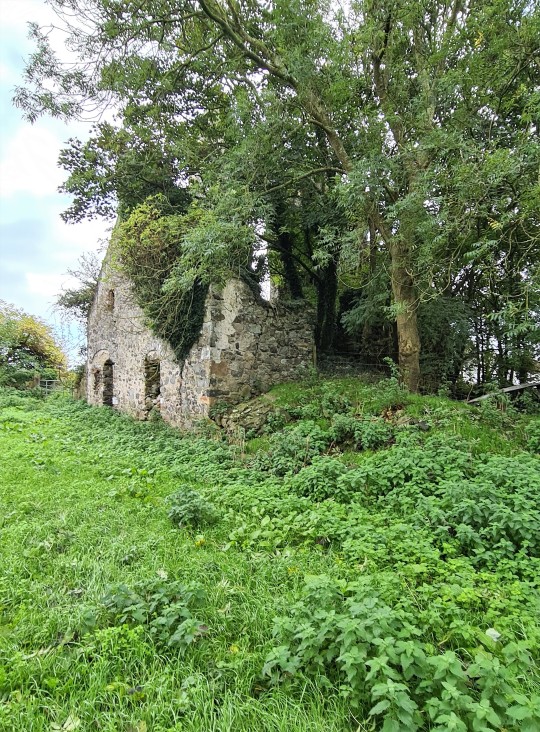
View On WordPress
1 note
·
View note
Text
youtube
10 Most Beautiful Places in Ireland
Ireland has the most beautiful cities and towns to visit, with the world’s most spectacular scenery. Check out the 10 Most Beautiful Places to Visit in Ireland.
1. Cliffs of Moher
2. Ring of Kerry
3. The Giant’s Causeway
4. Skellig Islands
5. Aran Islands
6. Glenveagh National Park
7. The Burren
8. Connemara National Park
9. Glendalough
10. Cooley Peninsula
0 notes
Photo
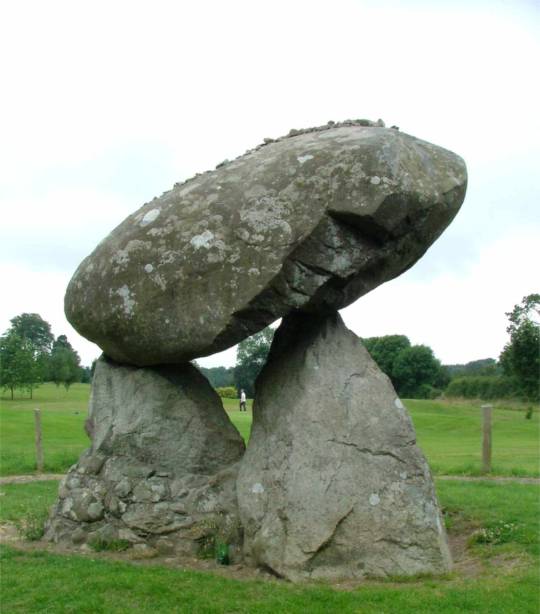
Proleek Portal Tomb
Proleek portal tomb (also known as Giant’s Grave or Giant’s Load) is an approximately 3.8 meters high portal tomb located in the townland of Proleek on the Cooley Peninsula in County Louth, Ireland.
Read more at: https://paganplaces.com/places/proleek-portal-tomb/
1 note
·
View note
Text
I'm hoooome... I was in the Cooley peninsula for a few days with family on a very sudden trip, but I got my direly needed time in the trees/hills so I'm sated (for now)
1 note
·
View note
Text
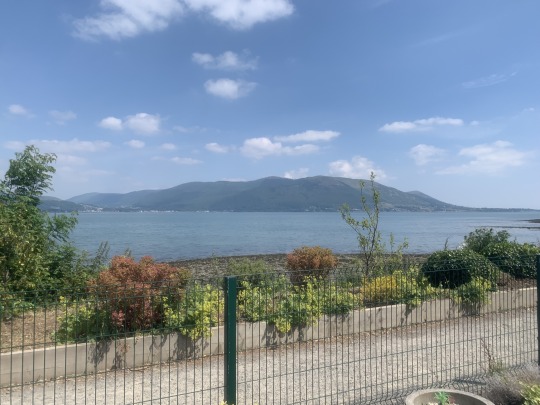
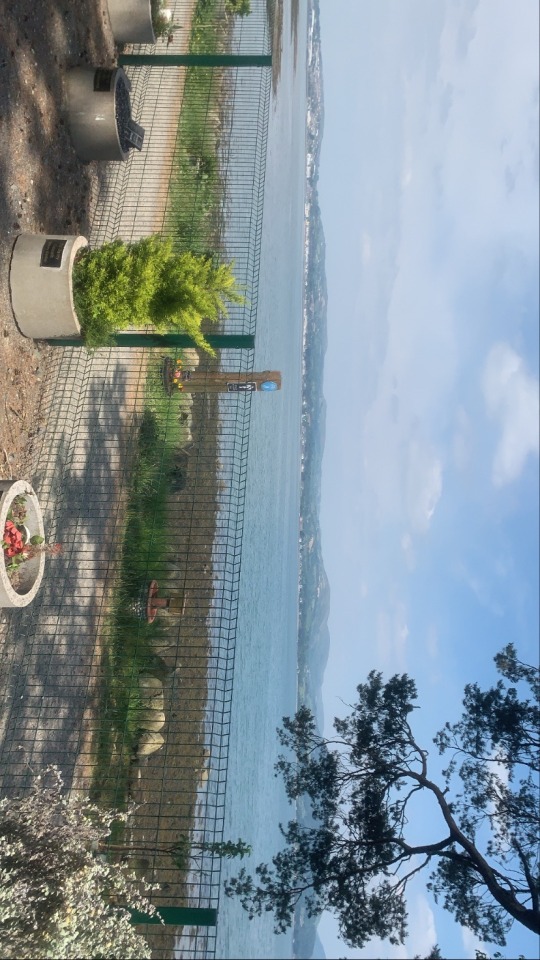
I really do love this peninsula so much! 💕
1 note
·
View note
Photo



Cooley Peninsula, Ireland
May 2017
#cooley peninsula#Ireland#beach#ocean#landscape#portrait#photography#photography on tumblr#nature#exploreireland#roam the planet#roamtheplanet
5 notes
·
View notes
Text
Sliabh Foy Loop Trail | The Home of Ireland's Last Leprechauns
Sliabh Foy Loop Trail | The Home of Ireland’s Last Leprechauns
Rising majestically above the town of Carlingford, Sliabh Foy (or Slieve Foye) is the highest peak on the Cooley Peninsula and within Co Louth.
The Sliabh Foy Loop Trail begins in Carlingford, then winds its way toward the protected reserve. In 2010, Carlingford earned official European Union recognition for its leprechauns. The Sliabh Foy Loop Trail became a sanctuary for the country’s…
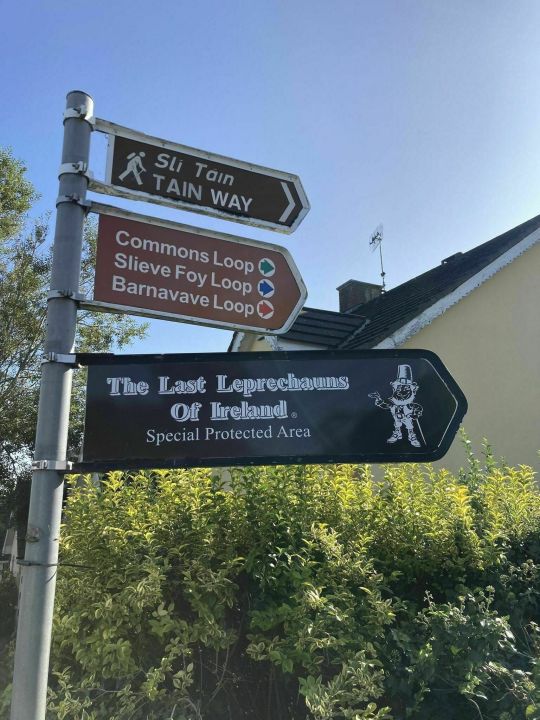
View On WordPress
#Carlingford#Cooley Peninsula#County Louth#History of Ireland#Ireland#Irish History#Sliabh Foy Loop Trail#Slieve Foye
13 notes
·
View notes
Photo
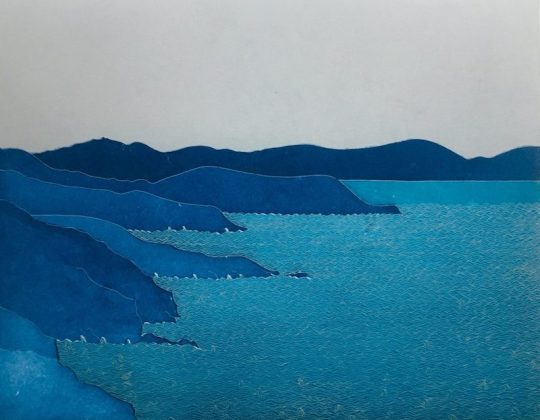


Yoko Akino, born in Japan, lives in Ireland.
"I am a member of Graphic Studio Dublin. From my childhood in a village in the mountain forests near Kyoto, Japan, to my life today, with a young family beside the hills and waters of the Cooley Peninsula, Ireland, my work emerges from lived experience. In its creation I grow in appreciation and wonder for all that life offers. I have always been interested in lines; the curved shapes of the human body, the geometry of architecture and shadow, the dynamic ripples and motion of the natural world. With copper-plate etching and aquatint I can produce the crisp lines and colours of the world as I see it, often focusing on the interplay of stillness and motion."
https://www.saatchiart.com/yokoakino
https://www.sofinearteditions.com/yoko-akino/
11 notes
·
View notes
Text
John Graves Simcoe
For those who don't know much about John Graves Simcoe, I am going to be posting some fun things, as a Canadian who has lived his entire life in towns/places impacted by Simcoe himself. These are from his time in Canada, since I assume those who have seen TURN have a very vague idea of what he did in the Revolutionary War (even though it's very inaccurate).
John Graves Simcoe (25 February 1752 – 26 October 1806) was a British Army general and the first lieutenant governor of Upper Canada from 1791 until 1796 in southern Ontario and the watersheds of Georgian Bay and Lake Superior. He founded York (now Toronto) and was instrumental in introducing institutions such as courts of law, trial by jury, English common law, and freehold land tenure, and also in the abolition of slavery in Canada.
His long-term goal was the development of Upper Canada (Ontario) as a model community built on aristocratic and conservative principles, designed to demonstrate the superiority of those principles to the republicanism and democracy of the United States. His energetic efforts were only partially successful in establishing a local gentry, a thriving Church of England, and an anti-American coalition with select Indigenous nations. He is seen by many Canadians as a founding figure in Canadian history, especially by those in Southern Ontario.[3] He is commemorated in Toronto with Simcoe Day.
First Lieutenant Governor of Upper Canada (known today as; Ontario.)
The Constitutional Act 1791 divided Canada into the Provinces of Upper Canada (Ontario) and Lower Canada (Quebec). The Act established separate governments and legislative assemblies for each province. Lower Canada was the French-speaking eastern portion, which retained the French civil law and protections for the Roman Catholic Church established when Britain took over the area after its defeat of the French in the Seven Years' War. Upper Canada was the western area, newly settled after the American Revolutionary War. The settlers were mostly English speakers, including Loyalists from the Thirteen Colonies, and also the Six Nations of the Iroquois, who had been British allies during the war. The Crown had purchased land from the Mississauga and other First Nations to give the Loyalists land grants in partial compensation for property lost in the United States, and to help them set up new communities and develop this territory.[18]
Simcoe was appointed Lieutenant-Governor on 12 September 1791, and left for Canada with his wife Elizabeth and daughter Sophia, leaving three daughters behind in England with their aunt. They left England in September and arrived in Canada on 11 November. Due to severe weather, the Simcoes spent the winter in Quebec City. Simcoe finally reached Kingston, Upper Canada on 24 June 1792.[17]
In a proclamation on 16 July 1792, he renamed several islands at the mouth of the archipelago at the head of the St. Lawrence river for the victorious Generals at the Battle of the Plains of Abraham (Amherst Island, Gage Island, Wolfe Island, and Howe Island).[19]
Under the Constitutional Act, the provincial government consisted of the Lieutenant-Governor, an appointed Executive Council and Legislative Council, and an elected Legislative Assembly. The first meeting of the nine-member Legislative Council and sixteen-member Legislative Assembly took place at Newark (now Niagara-on-the-Lake) on 17 September 1792.
Following Simcoe's work precipitated by the Chloe Cooley incident, the Assembly passed the first Act Against Slavery in the British Empire in 1793, and the English colonists of Upper Canada took pride in this distinction with respect to the French-Canadian populace of Lower Canada. The Upper Canadians valued their common law legal system, as opposed to the civil law of Quebec, which had chafed them ever since 1763. This was one of the primary reasons for the partition of 1791. Simcoe collaborated extensively with his Attorney-General John White on the file.
The principles of the British Constitution do not admit of that slavery which Christianity condemns. The moment I assume the Government of Upper Canada under no modification will I assent to a law that discriminates by dishonest policy between natives of Africa, America, or Europe.
— John Graves Simcoe, Address to the Legislative Assembly[20]
Slavery was thus ended in Upper Canada long before it was abolished in the British Empire as a whole. By 1810, there were no slaves in Upper Canada, but the Crown did not abolish slavery throughout the Empire until 1834.
Simcoe's first priority was the Northwest Indian War between the United States and the "Western Confederacy" of Native Americans west of the Appalachian Mountains and south of the Great Lakes (the Shawnee, Miami, Wyandot, and other tribes). This conflict had begun in 1785, and was still raging when Simcoe arrived in 1792. Simcoe had hoped to form an Indian buffer state between the two countries, even though he distrusted Joseph Brant, the main Indian leader. Simcoe rejected the section of the Treaty of Paris (1783) which awarded that area to the US, on the grounds that American actions had nullified the treaty.[21] However, the French Revolutionary Wars broke out in 1793. The government in London decided to seek good terms with the United States. Simcoe was instructed to avoid giving the US reason to mistrust Britain but, at the same time, to keep the Natives on both sides of the border friendly to Britain. The Indians asked for British military support, which was initially refused, but in 1794 Britain supplied the Indians with rifles and ammunition.[22]
In February 1794, the governor general, Lord Dorchester, expecting the US to ally with France, said that war was likely to break out between the US and Britain before the year was out. This encouraged the Indians in their war. Dorchester ordered Simcoe to rally the Indians and arm British vessels on the Great Lakes. He also built Fort Miami (present-day Maumee, Ohio) to supply the Indians. Simcoe expelled Americans from a settlement on the southern shore of Lake Erie which had threatened British control of the lake. US President Washington denounced the "irregular and high-handed proceeding of Mr. Simcoe."[23] While Dorchester planned for a defensive war, Simcoe urged London to declare war: "Upper Canada is not to be defended by remaining within the boundary line."[24] Dorchester was officially reprimanded by the Crown for his strong speech against the Americans in 1794.
Simcoe realised that Newark made an unsuitable capital because it was on the Canada–US border and subject to attack. He proposed moving the capital to a more defensible position, in the middle of Upper Canada's southwestern peninsula between Lake Erie and Lake Huron. He named the new location London, and renamed the river there the Thames in anticipation of the change. Dorchester rejected this proposal, but accepted Simcoe's second choice, the present site of Toronto. Simcoe moved the capital there in 1793, and renamed the settlement York after Frederick, Duke of York, King George III's second son. The town was severely underdeveloped at the time of its founding so he brought with him politicians, builders, Nova Scotia timber men, and Englishmen skilled in whipsawing and cutting joists and rafters.[25]
Simcoe began construction of two roads through Upper Canada, for defence and to encourage settlement and trade. Yonge Street (named after British Minister of War Sir George Yonge) ran north–south from York to Lake Simcoe. Soldiers of the Queen's Rangers began cutting the road in August 1793, reaching Holland Landing in 1796. Dundas Street (named for Colonial Secretary Henry Dundas) ran east–west, between York and London.
The Northwest Indian War ended after the United States defeated the Indians at the Battle of Fallen Timbers. They made peace under the Treaty of Greenville. While still at war with France, Britain could not afford to antagonise the US in the Jay Treaty of 1794, and agreed to withdraw north of the Great Lakes, as agreed in the Treaty of Paris (1783). Simcoe evacuated the frontier forts.
Legacy
In the winter of 1779, the first known Valentine's Day letter in America was given by then Lieutenant Colonel John Simcoe to Sarah 'Sally' Townsend.[31]
Simcoe Street in Oyster Bay, New York is named after him for his destruction of a vast apple orchard and reconstruction of a hill fort on the site.[32]
Act Against Slavery passed in 1793, leading to the abolition of slavery in Upper Canada by 1810. It was superseded by the Slavery Abolition Act 1833 that abolished slavery across the British Empire.
Simcoe named London, Ontario and the River Thames in Upper Canada.
He named Lake Simcoe and Simcoe County to the west and north of Lake Simcoe in honour of his father.
Simcoe named his summer home Castle Frank for his first son Francis Gwillim, who was preceded by eight daughters. (It is in what is now named Cabbagetown, a neighbourhood in downtown Toronto.)[33]
The Ontario Heritage Foundation placed a plaque in Exeter's cathedral precinct to commemorate his life.
Simcoe's regiment is still called the Queen's York Rangers, now an armoured reconnaissance regiment of the Canadian Forces reserves.
Many places in Canada were named in honour of Simcoe:
The town of Simcoe in southwestern Ontario
The Simcoe Fairgrounds in Simcoe.
Civic Holiday, a statutory holiday celebrated throughout Canada under a variety of names by region,[34] was established in honour of Simcoe by the Toronto City Council in 1869.[35] Other Ontario municipalities and then other provinces soon took up the holiday as well, leading to its Canada-wide status, but without any attribution to Simcoe. In 1965, the Toronto City Council declared the holiday would henceforth be known as Simcoe Day within Toronto.[35] Attempts have been made to have the official provincial name—still Civic Holiday[34]—amended, but none have succeeded.
Governor Simcoe Secondary School in St. Catharines, Ontario
Governor Simcoe Public School. Grades K – 8, in London, Ontario. The now closed and demolished school was located at the corner of Simcoe and Clarence Streets.
Three parallel streets in downtown Toronto, John Street, Graves Street, and Simcoe Street, are all located near the fort where Simcoe lived during his early years in York and were named for him. Graves Street was later renamed Duncan Street.
Simcoe Street, Simcoe Street United Church, and Simcoe Hall Settlement House in Oshawa.
Simcoe Street in New Westminster and Simcoe Park was named by Colonel Moody in reference to the surveying of the area after the city of Toronto.
Simcoe Street, Simcoe Street School and the Simcoe Street School Tigers Bantam Baseball Team of Niagara Falls
Simcoe Island, located near Kingston, Ontario
Simcoe Hall, located on the St. George campus of the University of Toronto
John Graves Simcoe Armoury, located on Industrial Parkway in Aurora, Ontario
There are two places named for Simcoe with the title Lord, but Simcoe was not made a Lord in his lifetime. They are the following:
Lord Simcoe Drive in Brampton, Ontario
Lord Simcoe Hotel, which operated from 1956 to 1981
Captain John Kennaway Simcoe, the last member of the Simcoe family, died without issue in 1891 and was survived by his widow beyond 1911
In Popular Culture
A fictionalised version of John Graves Simcoe is a primary antagonist in the 2014–2017 AMC drama Turn: Washington's Spies, portrayed by Samuel Roukin.[37] He is portrayed in the series as a cruel and ruthless sociopath.
Despite the strong fictionalisation of the namesake TV-show character, several biographical aspects of the latter's historical counterpart appear to have been adapted for and transferred onto the fictional character Edmund Hewlett. For instance, Hewlett's romantic ambitions regarding Anna Strong in the series resemble Simcoe's courtship of Sarah Townsend, sister of Culper Ring spy Robert Townsend, for whom he wrote a poem that is thought to be the first verifiable valentine on the North American continent.[38] It is presumed that Townsend, much like the fictionalised portrayal of Anna Strong on Turn, may have gathered and passed on intelligence gleaned from her unsuspecting suitor to the Culper Ring.
Similarly, Hewlett's close bond with his horse Bucephalus (presumably named after Bucephalus, the horse of Alexander the Great) which overarches all four seasons, appears to have been inspired by history: in 1783, John Graves Simcoe sent a series of letters to New York in order to find the horse he had ridden on campaign, Salem. Salem was located and Simcoe subsequently paid the considerable sum of £40 to have him shipped to England and thus returned to him.[39] Shortly before his departure to Upper Canada almost a decade later, it is reported he was greatly concerned for Salem's welfare in his absence, therefore making arrangements for the latter's care and upkeep.[40]
source; Wikipedia (https://en.wikipedia.org/wiki/John_Graves_Simcoe)
Now for some images, taken by me in Chatham, as well as Queen's Park in Toronto.





Now, some fun facts about me, related to Simcoe:
I was born in Chatham/Chatham-Kent
I go to high school in Simcoe County
I'm debating going to college in Toronto (to become a history teacher)
I've been to the Simcoe County Museum, where they have a bust of Simcoe and a whole wall of information about him (from what I could see- I was there on a WWI field trip and didn't really get to explore)
Every where I've lived/been to school, has been impacted by John Graves Simcoe.
In reality, he was not that bad a dude. TURN just TURNed (ha, get it) into the psychopathic antagonist they wanted. Alright, this has been fun but I need to go study Canadian law, piece homies.
#john graves simcoe#captain simcoe#john graves simcoe facts#queens rangers#i dont know what to tag anymore#turn: washington's spies
10 notes
·
View notes
Text
Walking Holiday Ireland
youtube
Walking Holiday Ireland are leading the way when it comes to providing the best hiking and walking tours in Ireland. Our walking holiday tours include some of the following Cooley and Mourne mountains, Wicklow way, Kerry way, Dingle Peninsula, and many more. Whether you are into adventurous hikes across challenging terrain or leisurely trekking along beautiful coastal paths, we have the ideal walking holiday in Ireland for you. All of our walking tours are hand-selected and checked by us as is all of our accommodation. If you have any questions for us you can get in touch with us by filling in the contact us form on the website.
Address: Blackrock County Louth,A91 NN24, Ireland
Phone: +353 87 957 3856
Email: [email protected]
Website: https://walkingholidayireland.com/
Fllow us
https://www.facebook.com/WalkingHolidayIreland
https://twitter.com/WalkinIreland
https://www.youtube.com/channel/UCS-C4DJsdDpeYNgsq0a0LTg/about
https://www.instagram.com/walkingholidayireland/
https://www.pinterest.ie/walkinireland/pins/
1 note
·
View note
Text
Wandelvakantie Ierland
Wandelvakantie Ierland loopt voorop als het gaat om het aanbieden van de beste wandelvakanties en wandeltochten in Ierland. We bieden een breed scala aan wandel- en trektochten, waaronder de Cooley en Mourne Mountains, Glens of Antrim en Causeway Kust, Dingle Peninsula en natuurlijk de Wicklow Way. We bieden begeleide of individuele wandeltochten, dus we hebben voor elk wat wils. Of u nu avontuurlijk bent of geniet van een ontspannen wandeling langs prachtige kustpaden, wij hebben de ideale vakantie voor u. U kunt onze wandel- en wandeltochten online boeken en als u vragen heeft, kunt u altijd contact met ons opnemen.
Address: Papaverhof 14 2265 CB Den Haag Netherlands
phone: +310850644203
mail: [email protected]
https://wandelvakantieierland.nl/
Follow Us :
https://www.facebook.com/Wandelvakantie-Ierland-112080640165263/
https://nl.pinterest.com/wandelvakantieierland/
https://twitter.com/Wandelvakantie1
https://www.youtube.com/channel/UCYgcWTDaTIYhffCMGAualbw
1 note
·
View note
Text
Walking Holiday Ireland
Walking holiday Ireland is leading the way when it comes to providing the best walking holiday tours and hiking tours in Ireland. All walking tours are available to view on the website. Our tours include Cooley and Mourne mountains, Kerry way, Wicklow way, Glens of Antrim and Causeway Coast, and the Dingle Peninsula. We offer both guided and self guided tours. Our self-guided walking holidays allow you to discover the beautiful landscape and Irish countryside at your pace while we take care of all the details, including baggage transfers. Book with walking holiday Ireland today, you won't be disappointed.
Address: Blackrock County Louth,A91 NN24,Ireland
phone: +353879573856
mail: [email protected]
https://walkingholidayireland.com
Follow Us :
https://www.facebook.com/WalkingHolidayIreland
https://twitter.com/WalkinIreland
https://www.youtube.com/channel/UCS-C4DJsdDpeYNgsq0a0LTg/about
https://www.instagram.com/walkingholidayireland/
https://www.pinterest.ie/walkinireland/pins/
1 note
·
View note
Text
New Sigma 10-20mm Lens - First Shot
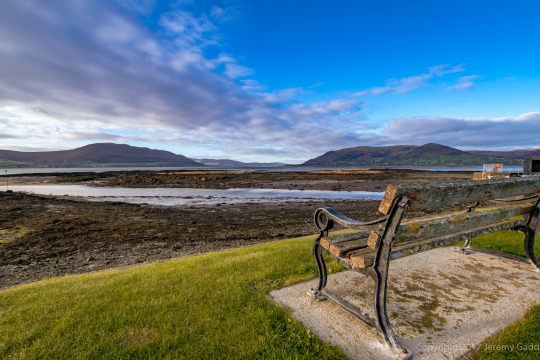
I’ve just bought a new Sigma 10-20mm f3.5 lens for my Nikon D5300 camera. This is one of my first shots at one of my favourite places, Greencastle, Co. Down. This is a lovely spot to sit and contemplate.
This was at 11mm, 1/250 sec at f10, ISO 400.
New Sigma 10-20mm Lens – First Shot was originally published on Jeremy Gadd
#2017#Carlingford Lough#Cooley Mountains#Cooley Peninsula#County Down#County Louth#Greencastle#Mountains#Nikon D5300#Northern Ireland#Seascapes#Sigma 10-20 Lens#Ultra Wide Angle Lens
0 notes